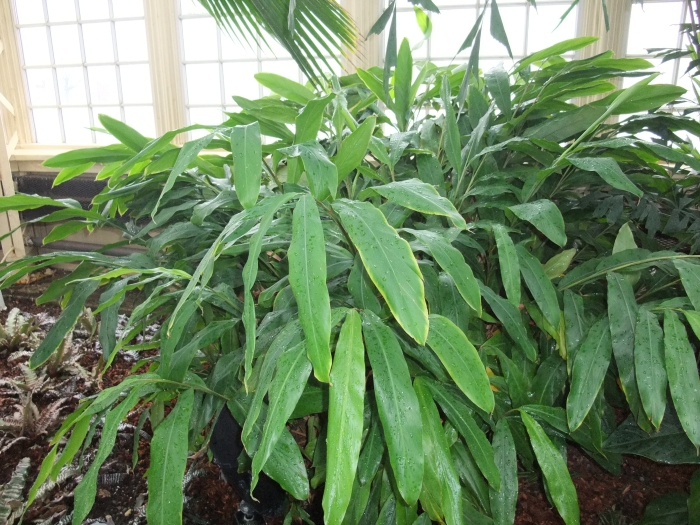True Cardamom
(Elettaria cardamomum)
True Cardamom (Elettaria cardamomum)
/
/

Chhe (talk)
Public domain
Image By:
Chhe (talk)
Recorded By:
Copyright:
Public domain
Copyright Notice:
Photo by: Chhe (talk) | License Type: Public domain | License URL: https://creativecommons.org/public-domain/ | Uploader: File Upload Bot (Magnus Manske) | Publisher: Wikimedia Commons | Title: ElettariaCardamomum.jpg | Notes: |














Estimated Native Range
Summary
Elettaria cardamomum, commonly known as True Cardamom or Kardemumma, is an evergreen perennial herb native to tropical rainforests in southern India. It can grow to a height of 2–4 m (6 ft 7 in – 13 ft 1 in) and features lance-shaped leaves that are dark green in color. The plant produces small, yellowish flowers with a purple tip, which are often hidden among the leaves. These flowers develop into green seed pods that are oblong and contain the aromatic seeds used as the spice cardamom. The flowering season typically occurs from April to May, and the flowers are not particularly showy, but the plant is highly valued for its flavorful seeds.
True Cardamom is cultivated for its seeds, which are a staple in both culinary and medicinal applications. The plant thrives in humid, tropical climates with consistent moisture and prefers rich, well-drained soils with partial shade, mimicking its natural forest floor habitat. It is often grown in spice gardens or as a greenhouse specimen in cooler climates. Cardamom requires regular watering and does not tolerate drought well. It is not commonly associated with serious diseases or pests, although it can be susceptible to root rot if overwatered or planted in poorly drained soils. True Cardamom is not typically invasive when grown outside its native range, but it does require a warm, humid environment to flourish.CC BY-SA 4.0
True Cardamom is cultivated for its seeds, which are a staple in both culinary and medicinal applications. The plant thrives in humid, tropical climates with consistent moisture and prefers rich, well-drained soils with partial shade, mimicking its natural forest floor habitat. It is often grown in spice gardens or as a greenhouse specimen in cooler climates. Cardamom requires regular watering and does not tolerate drought well. It is not commonly associated with serious diseases or pests, although it can be susceptible to root rot if overwatered or planted in poorly drained soils. True Cardamom is not typically invasive when grown outside its native range, but it does require a warm, humid environment to flourish.CC BY-SA 4.0
Plant Description
- Plant Type: Herb
- Height: 6-15 feet
- Width: 4-10 feet
- Growth Rate: Moderate
- Flower Color: Yellow, Purple, White
- Flowering Season: Spring
- Leaf Retention: Evergreen
Growth Requirements
- Sun: Part Shade
- Water: Medium, High
- Drainage: Medium
Common Uses
Edible*Disclaimer: Easyscape's listed plant edibility is for informational use. Always verify the safety and proper identification of any plant before consumption., Fragrant
Natural Habitat
Tropical rainforests in southern India
Other Names
Common Names: Kardemumma, Cardamon, Cardamom, Green
Scientific Names: , Elettaria cardamomum, Amomum cardamomum, Elettaria cardamomum var. minuscula, Amomum repens, Amomum cardamon, Alpinia cardamomum, Elettaria repens, Amomum ensal, Amomum racemosum
GBIF Accepted Name: Elettaria cardamomum (L.) Maton